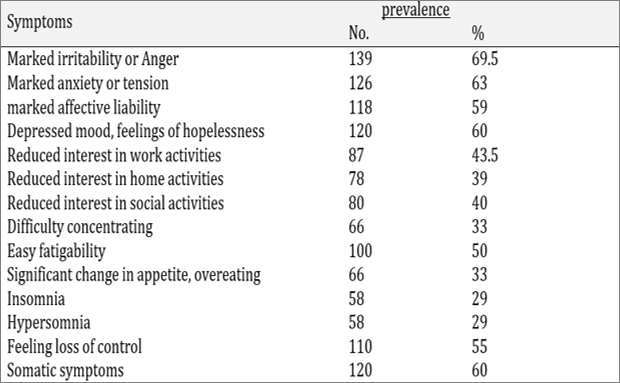Abstract
The premenstrual dysphoric disorder is the severe form of premenstrual syndrome that consists of a cluster of somatic, effective, and behavioral symptoms triggered by the changes in the sex steroids levels which goes along with the ovulatory menstrual cycle. The disorder recurs each month and starting after the ovulation and ceases in a short time after the beginning of menses. The current study was aimed to study the prevalence, socio-demographic variables, symptoms profile and comorbidity of premenstrual dysphoric disorder in Iraqi women. A cross-sectional study performed on 200 Iraqi women of age (15-50) years during the period between 2nd of September 2017-30th of September 2018. The study was done in the outpatient department of gynaecology and obstetrics of Maternity and Children Teaching Hospital in Al-Diwaniyah city, Iraq. Each patient was assessed individually using a structured interview that includes the demographic characteristics, and the Premenstrual Symptoms Screening Tool. The study revealed that (9%) of women were suffering from a premenstrual dysphoric disorder. It was present in (39%) of the younger women (18-24years of age) in compa ison to other age groups. The predominant symptom was severe anger or irritability (69.5%) and, (20%) of women with the premenstrual dysphoric disorder have comorbid depression. The premenstrual dysphoric disorder was more common in women of young age group, married, of moderate economic status, and of a higher educational level. The predominant symptom was severe anger or irritability. Women with premenstrual dysphoric disorder reported high comorbid depression.
Full text article
Authors

This work is licensed under a Creative Commons Attribution-NonCommercial-NoDerivatives 4.0 International License.

